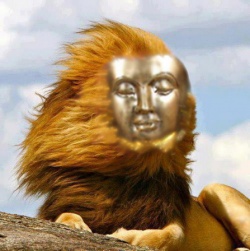Difference between revisions of "Pure Land School"
| (2 intermediate revisions by the same user not shown) | |||
| Line 1: | Line 1: | ||
[[File:142 39gh.jpg|thumb|250px|]] | [[File:142 39gh.jpg|thumb|250px|]] | ||
| − | |||
| − | + | ||
| + | |||
| + | |||
| + | |||
| + | |||
| + | |||
| + | |||
| + | <poem> | ||
| + | [[Pure Land School]] When [[Mahayana Buddhism]] spread to [[China]], [[Pure Land]] [[ideas]] found {{Wiki|fertile}} ground for [[development]]. In [[the fourth]] century, the {{Wiki|movement}} crystallized with the formation of the [[Lotus Society]], founded by [[Master]] [[Hui Yuan]] | ||
| + | |||
| + | |||
| + | (334-416), the [[first Pure Land Patriarch]]. The school was formalized under the [[Patriarchs]] [[T'an Luan]] ([[Donran]]) and Shan [[Tao]] ([[Zendo]]). [[Master]] Shan Tao's teachings, in particular, greatly influenced the [[development]] of [[Japanese]] [[Pure Land]], associated with [[Honen Shonin]] ([[Jodo school]]) and his [[disciple]], [[Shinran Shonin]] ([[Jodo Shinshu school]]) in the 12th and 13th centuries. [[Jodo Shinshu]], or [[Shin Buddhism]], places overwhelming {{Wiki|emphasis}} on the [[element]] of [[faith]]. | ||
| + | |||
| + | |||
| + | |||
| + | [[Pure Land]] comprises the schools] of {{Wiki|East Asia}} which {{Wiki|emphasize}} aspects of [[Mahayana Buddhism]] stressing [[faith]] in [[Amida]], [[meditation]] on and {{Wiki|recitation}} of his [[name]], and the [[religious]] goal of being [[reborn]] in his "[[Pure Land]]" or "[[Western Paradise]]." (Keith Crim.) | ||
| + | |||
| + | |||
Note: An early [[form]] of [[Buddha]] Recitation can be found in the [[Nikayas]] of the [[Pali Canon]]: | Note: An early [[form]] of [[Buddha]] Recitation can be found in the [[Nikayas]] of the [[Pali Canon]]: | ||
| − | In the [[Nikayas]], the [[Buddha]] ... advised his [[disciples]] to think of him and his [[virtues]] as if they saw his [[body]] before their [[eyes]], whereby they would be enabled to accumulate [[merit]] and attain [[Nirvana]] or be saved from transmigrating in the [[evil paths]] ... ({{Wiki|D.T. Suzuki}}, The Eastern [[Buddhist]], Vol.3, No.4, p.317.) | + | In the [[Nikayas]], the [[Buddha]] ... advised his [[disciples]] to think of him and his [[virtues]] as if they saw his [[body]] before their [[eyes]], whereby they would be enabled to [[accumulate]] [[merit]] and attain [[Nirvana]] or be saved from transmigrating in the [[evil paths]] ... ({{Wiki|D.T. Suzuki}}, The Eastern [[Buddhist]], Vol.3, No.4, p.317.) |
see also:[[Pure Land]] | see also:[[Pure Land]] | ||
| + | |||
| + | |||
| + | |||
| + | </poem> | ||
[[Category:Pure Land]] | [[Category:Pure Land]] | ||
Latest revision as of 13:56, 26 December 2023
Pure Land School When Mahayana Buddhism spread to China, Pure Land ideas found fertile ground for development. In the fourth century, the movement crystallized with the formation of the Lotus Society, founded by Master Hui Yuan
(334-416), the first Pure Land Patriarch. The school was formalized under the Patriarchs T'an Luan (Donran) and Shan Tao (Zendo). Master Shan Tao's teachings, in particular, greatly influenced the development of Japanese Pure Land, associated with Honen Shonin (Jodo school) and his disciple, Shinran Shonin (Jodo Shinshu school) in the 12th and 13th centuries. Jodo Shinshu, or Shin Buddhism, places overwhelming emphasis on the element of faith.
Pure Land comprises the schools] of East Asia which emphasize aspects of Mahayana Buddhism stressing faith in Amida, meditation on and recitation of his name, and the religious goal of being reborn in his "Pure Land" or "Western Paradise." (Keith Crim.)
Note: An early form of Buddha Recitation can be found in the Nikayas of the Pali Canon:
In the Nikayas, the Buddha ... advised his disciples to think of him and his virtues as if they saw his body before their eyes, whereby they would be enabled to accumulate merit and attain Nirvana or be saved from transmigrating in the evil paths ... (D.T. Suzuki, The Eastern Buddhist, Vol.3, No.4, p.317.)
see also:Pure Land
